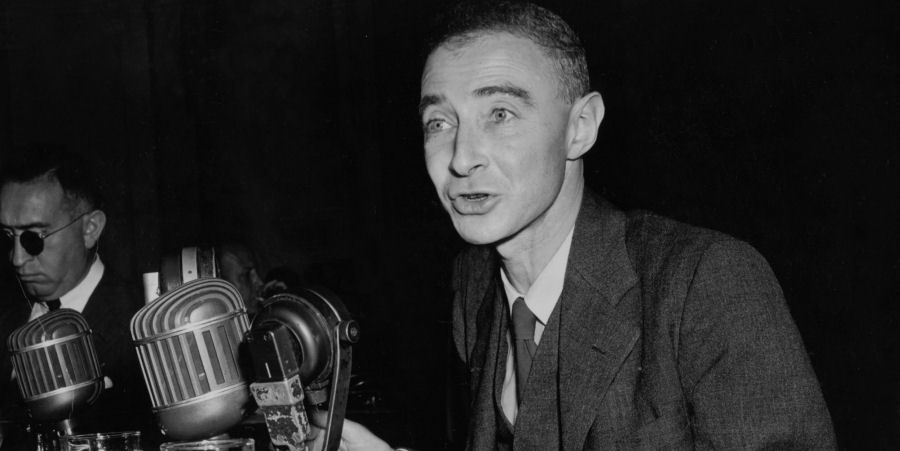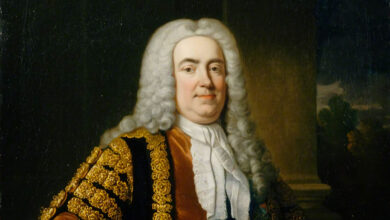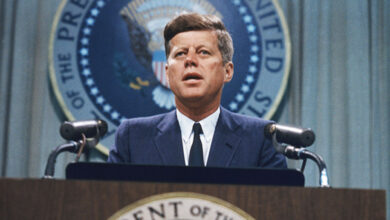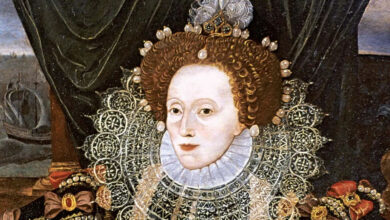
Podcast: Play in new window | Download
Subscribe: Spotify | Amazon Music | Youtube Music | RSS
There are many examples of people from history who are immensely famous in their field but who are not necessarily that well known otherwise. J Robert Oppenheimer is one of those figures. If you have an interest in physics or the history of the Second World War, then you will likely have heard of him, but otherwise, you may not. It is also true that the significance of the contributions a person made during their lifetime may be diluted with time and so although he may not be a household name today, there was a time when J Robert Oppenheimer was one of the most famous scientific minds on the planet and whose achievements shaped 20th-century physics and beyond.
Julius Robert Oppenheimer was born in New York City on 22 April 1904. His parents were Jewish and had emigrated to the United States from Germany in the late 1880s. Oppenheimer had an enduring love of learning throughout his childhood. He had a voracious appetite for knowledge and advanced so quickly through his classes that he finished his third and fourth grades in the same year. He also skipped most of the 8th grade.
He was accepted by Harvard at the age of 18 and although his favourite study subject was chemistry, Harvard at the time required its students to have a broader repertoire of knowledge which included philosophy, mathematics, literature, and history. J Robert Oppenheimer was nothing if not brilliant and by taking six courses a term he managed to catch up very quickly in the fields where he was considered weaker. By his first year, he was accepted to graduate standing in physics due to the extra personal study he had been doing. This meant that he would not be required to take the entry-level classes in physics and was able to take the advanced level ones instead, effectively allowing him to skip ahead.
It was not long before he discovered his true passion, which was theoretical physics, gaining significant note and accolades along the way. He even assisted a Nobel prize-winning physicist during the 1930s. By 1936 he was a full professor at Berkeley although his theoretical research continued to keep him quite busy as well. During his time at Berkeley, the FBI under J Edgar Hoover started to take an interest in J Robert Oppenheimer as he was showing some communist tendencies. He had close friends and family who were either active in the communist party or who had previously been members, including his wife Kitty, his lover Jean Tatlock and his brother Frank.
His genius did not go overlooked though, and with war escalating in Europe, the United States became concerned that it would eventually be drawn fully into the conflict. Consequently, even before the attack by the Japanese on Pearl Harbor in December 1941, the event which drew the USA into an all-out war, President Franklin D Roosevelt had approved an idea to harness the power of the atom and to as quickly as possible, develop the atomic bomb. By the middle of 1942, J Robert Oppenheimer had been selected to help lead the team that would eventually do so. Due to the security clearance required to lead such a team, the FBI’s interest also grew and Oppenheimer’s home was bugged as he was put under close surveillance.
Oppenheimer and others began considering possible site locations for nuclear testing and Oppenheimer felt that an area known as Los Alamos Ranch School outside of Santa Fe in New Mexico might fit the bill. Oppenheimer had fallen in love with the southwestern United States many years previously when an unexpected illness he had contracted whilst in Europe compelled him to seek a different climate in order to recuperate. He consequently spent some time in the southwest United States and developed a love of horseback riding and for the American desert.
It took thousands of brilliant individuals working tirelessly in order for the mathematics, radiological concepts, and advanced theoretical probabilities to be understood sufficiently to finally perfect atomic weapons technology. Three years of continuous work on the project eventually culminated with a test at the Trinity test site near Alamogordo, New Mexico on 16 July 1945, a test that saw the world’s first-ever nuclear explosion.
As J Robert Oppenheimer witnessed the devastating explosion, and his contribution to its creation, a verse from Hindu scripture came to him; “I am become death, the destroyer of worlds.”
The weapon was an incredible scientific and military success, but secrecy was key and the whole Manhattan Project was kept secret until the USA was able to deliver two bombs to targets in Japan. The first of these was Hiroshima on 6 August 1945 and then Nagasaki three days later. After the bombings, J Robert Oppenheimer, in the eyes of many, was seen as a scientific hero showing what was capable of being achieved with a brilliant mind and American ingenuity and resources.
His greatness though did not stop the FBI which passed some of its research to J Robert Oppenheimer’s enemies. This resulted in him being hauled in front of the House Un-American Activities Committee in 1949 where Oppenheimer admitted that he had been associated with the Communist Party during the 1930s. His opposition to the development of the hydrogen bomb added fuel to the fire and on 21 December 1953, his security clearance was revoked by the Atomic Energy Commission.
J Robert Oppenheimer had become a household name, at least in the physics and wider science community and was only marginally less famous than Albert Einstein. Having been stripped of his security clearance, he turned his energies back towards education. He had also become worried about the potential for scientific technologies and innovations to be used to hurt humanity rather than help it. Consequently, he partnered with notable scientists of the time including Albert Einstein and together they formed the World Academy of Arts and Science to help mediate and combat the misuse of scientific knowledge.
Around the same time, J Robert Oppenheimer gave lectures at home and abroad, including Europe and notably in Japan about science throughout history and the nature of the universe. In 1957 he was made an Officer of the Legion of Honour by France and in 1963 he received the Enrico Fermi Award from President John F Kennedy. He also received an award from President Lyndon Johnson after Kennedy was assassinated which recognised Oppenheimer’s contributions to both theoretical physics and the Los Alamos Laboratory which had significantly shortened the war in the Pacific. Although this essentially brought Oppenheimer back in from the cold, he still didn’t get his security clearance back and indeed his connections to the communist party were brought up again in the 1970s when his daughter Katherine, who was trying to get work as a UN translator was refused the required security clearance.
Like so many of his generation, J Robert Oppenheimer smoked a lot and in 1965 he was diagnosed with throat cancer. He had surgery and underwent radiation treatment and chemotherapy but none of these were successful. He ultimately lost his battle with the disease and it claimed his life on 18 February 1967. He was 62 years old.
J Robert Oppenheimer is remembered as a brilliant scientist and teacher and the father of modern theoretical physics, at least as far as the USA is concerned, and whatever one’s views on the development of weapons of mass destruction, his contribution to the emergence of big science cannot be underestimated.
Podcast: Play in new window | Download
Subscribe: Spotify | Amazon Music | Youtube Music | RSS




